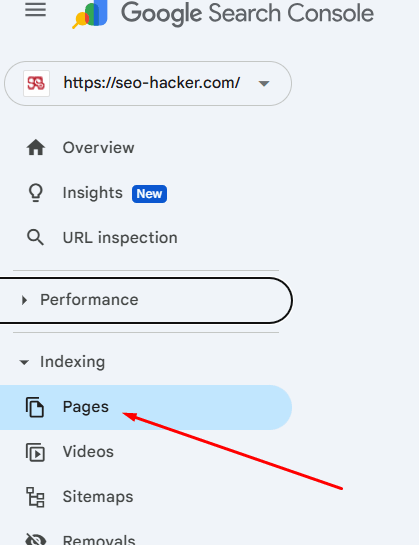Have you ever been on a website, clicked a link, and landed on a “Page not found” error? That’s a standard 404 error, and it’s a common sight. But what about an error that doesn’t actually return a 404 status code—one that looks like a valid page to search engines but still says “Page not found” or shows up as a blank page? That’s a soft 404. It happens when a page appears to be missing but returns a “200 OK” status instead of the proper 404 code.
This problem can quietly waste crawl budget, dilute link equity, and harm your rankings without you even realizing it. Understanding the sneaky soft 404 is the first step to fixing it. In this blog, we’ll explain what a soft 404 is, how it affects your SEO, and the steps you can take to detect and resolve it.
What Exactly Is a Soft 404 Error?
Think of a website like a big library. A link is like a book’s address. When you click a link and get a normal 404 error, it’s like a librarian telling you, “Sorry, that book is not here.” This is a clear message.
A soft 404 error is different. In this case, you click the link, and the web server says, “Everything is fine!” (which is the 200 OK status code). But when you get to the shelf, it’s empty. A search engine looking for the book will get confused. The page might show a “not found” message, but the web server still says the page is OK. This is a mixed signal that causes big problems.
Soft vs. Normal (Hard) 404
A normal 404 error is a good thing. It’s the correct way to tell browsers and search engines a page is gone forever. This helps them remove the page from their search results, so people don’t keep finding a broken link.
A Soft 404, however, sends an “okay” signal. Search engines then waste time and energy trying to understand and list an empty page. This can make Google think your site is not very well-maintained.
Why Do Soft 404s Happen?
These errors happen for a few reasons. One of the most common is a page that has little to no content on it. Even if the web server says the page is fine, an empty page is still worthless to a user.
Other causes include:
- Redirecting an old, broken link to your homepage.
- Having pages that fail to load properly.
- Using generic “page not found” templates while still sending an “okay” signal.
Why Should You Care About Soft 404 Errors?
You might think, “Well, it’s not a big deal if a user sees a mostly empty page.” But for search engines, it’s a huge problem. These errors can seriously hurt how your website performs on Google.
It Wastes Google’s Time
Every website has something called a “crawl budget.” This is the amount of time Google’s robots spend looking at your site. When Google’s robots find a Soft 404, they waste valuable time on a useless page. This means they spend less time on your optimized (and valuable) website pages.
If Google finds these errors too often, it might decide to crawl your site less frequently. This means your new blog posts or updated product pages won’t be found as quickly, which is bad for business.
It Hurts Your Search Rankings
Google’s main goal is to deliver the best and most useful results to its users. When your site has a large number of soft 404 errors, it signals poor quality in Google’s eyes and makes it harder for your valuable pages to rank well.
Think of it this way: Google wants users to have the best possible search experience. If your site is filled with soft 404s that remain unaddressed, it suggests you’re not actively maintaining or auditing your website. Why would Google prioritize your site—or worse, rank error pages—over competitors with fully functional content?
On top of that, soft 404s waste Google’s crawling resources. Instead of focusing on your strongest content, search bots get caught up in empty pages, which can cause your high-quality pages to rank lower. The result? Reduced visibility, less traffic, and fewer opportunities for people to find you online.
How to Find and Fix Soft 404 Errors
The good news is that these errors can be found and fixed. They don’t usually send you big error messages, so you have to be proactive. Here’s a simple guide to finding and fixing them.
Step 1: Check Google Search Console
The best place to start is with Google Search Console (GSC). This is a free tool from Google that all website owners should use. In GSC, find the “Pages” report under the “Indexing” section.
Google will list any pages it has flagged as “Soft 404s” here. This is your most direct way to know what needs to be fixed.
Step 2: Use Website Crawling Tools
You can also use website crawling tools like Screaming Frog. These tools act like a search engine and go through all your pages. They can help you find pages with very little content or pages that redirect incorrectly. Look for any page that is flagged for having “low content” — empty pages are often caused by soft 404 errors. Once you have to list of pages, you will need to check them manually, as this is the only way to determine if the page is actually empty or broken.
Note: Want to stay updated with the latest features and improvements in Screaming Frog SEO Spider 22.0? Check out the post I just linked to learn about the newest functionalities, bug fixes, and how these updates can enhance your website audits and SEO performance.
Step 3: Fix the Error
Once you’ve identified a Soft 404, the fix depends on why the page is broken.
If the page is truly gone forever: The best solution is to send a proper 404 (Not Found) or 410 (Gone) status code. This clearly tells search engines the page is officially deleted.
If the page has moved: Use a 301 (Permanent Redirect) status code. This tells search engines the page has a new home and passes along any SEO value. Read up on our how-to guide on applying redirects for this step.
If the page has no content: You should either add more unique and helpful content to the page or simply combine it with another, more useful page on your site.
Author’s Note: This is just one of the many things you have to check for if you want to do your technical SEO well. If you’re not sure what other possible issues you should be looking for (or what to do about them when you do find them), you can check out my comprehensive technical SEO checklist.
Key Takeaway
A soft 404 error is a silent problem that can damage your website. It happens when your server says a page is fine, but the page is empty or missing. These errors waste your crawl budget and hurt your rankings. To fix them, regularly check Google Search Console and use the correct HTTP status codes (404/410 for gone pages, 301 for moved pages) or improve page content. By fixing these issues, you’ll help your website stay healthy and easy for people to find.
The post What is a Soft 404 Error and What to Do About It? appeared first on SEO Services Agency in Manila, Philippines.
















